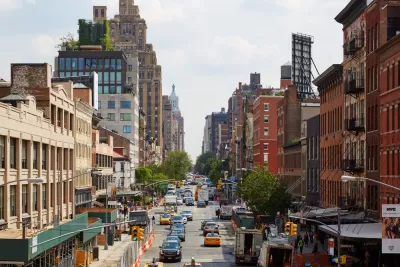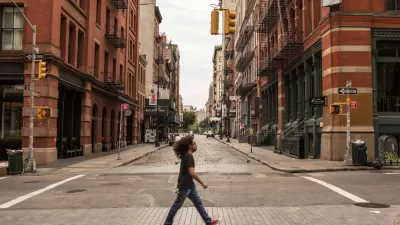In keeping with the goals of the Regional Plan Association's Fourth Regional Plan, New York City must continue its nascent trend of rezoning for more building capacity in affluent neighborhoods.

Moses Gates writes for the Regional Plan Association to present a vision for affluent New York neighborhoods that includes more zoned capacity for housing development—i.e., upzoning.
The article is presented in context of the ongoing effort to upzone NoHo and SoHo in Manhattan—the most affluent neighborhood to be rezoned for more development capacity in a recent series of rezoning processes in New York City.
- NoHo and SoHo Rezoning Controversies, Amplified (September 2020)
- Advocating for Upzoning in Two of New York's Wealthiest Neighborhoods (June 2019)
- Op-Ed: SoHo and NoHo Need a Zoning Overhaul (June 2019)
- SoHo and NoHo Next for the New York City Rezoning Tour (September 2018)
The central argument of Moses's writing here: that NoHo and SoHo might be there first, but they shouldn't be the last:
For too long, higher-income, majority-white neighborhoods have been able to stymie development and affordable housing, shifting the burden onto other, lower-income neighborhoods. We need affordable housing in every neighborhood, especially ones without it.
Another rezoning process in an affluent part of the city is already underway in Gowanus, but more "could easily follow," according to Moses, who has some specific recommendations: Midwood, Forest Hills North, Riverdale, the Meatpacking District and the Far-West Village, and Grasmere.
For those keeping track at home, that's all five boroughs, and a lot more detail is included to explain the specific potential of each neighborhood to add more housing capacity.
FULL STORY: Five New York Neighborhoods to Upzone for Affordable Housing

Planetizen Federal Action Tracker
A weekly monitor of how Trump’s orders and actions are impacting planners and planning in America.

Chicago’s Ghost Rails
Just beneath the surface of the modern city lie the remnants of its expansive early 20th-century streetcar system.

San Antonio and Austin are Fusing Into one Massive Megaregion
The region spanning the two central Texas cities is growing fast, posing challenges for local infrastructure and water supplies.

Since Zion's Shuttles Went Electric “The Smog is Gone”
Visitors to Zion National Park can enjoy the canyon via the nation’s first fully electric park shuttle system.

Trump Distributing DOT Safety Funds at 1/10 Rate of Biden
Funds for Safe Streets and other transportation safety and equity programs are being held up by administrative reviews and conflicts with the Trump administration’s priorities.

German Cities Subsidize Taxis for Women Amid Wave of Violence
Free or low-cost taxi rides can help women navigate cities more safely, but critics say the programs don't address the root causes of violence against women.
Urban Design for Planners 1: Software Tools
This six-course series explores essential urban design concepts using open source software and equips planners with the tools they need to participate fully in the urban design process.
Planning for Universal Design
Learn the tools for implementing Universal Design in planning regulations.
planning NEXT
Appalachian Highlands Housing Partners
Mpact (founded as Rail~Volution)
City of Camden Redevelopment Agency
City of Astoria
City of Portland
City of Laramie





























